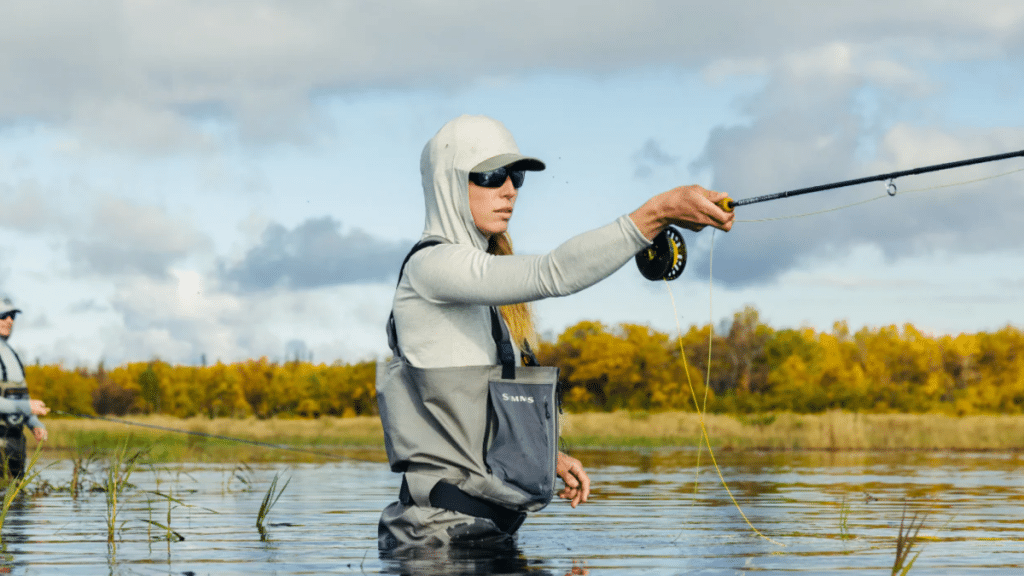Proper fishing attire is crucial for safety and comfort, enhancing the fishing experience. Adequate clothing, such as moisture-wicking shirts, sun-protective hats, and polarized sunglasses, can protect against harmful UV rays, reduce glare, and keep the body dry in varying weather conditions. When you gear up for fishing, sturdy, waterproof boots and layered clothing ensure preparedness for wet environments and fluctuating temperatures. Gloves provide grip and protect hands from sharp hooks and fish spines, while a quality life jacket is essential when fishing on a boat. Investing in appropriate fishing gear helps anglers focus on the sport and enjoy their time on the water.
Choosing the Right Base Layers
To ensure a comfortable and dry fishing experience, opt for moisture-wicking base layers like polyester or merino wool. By drawing sweat away from the skin, these substances speed up its evaporation. They should be lightweight and breathable, allowing for better temperature regulation. Steer clear of cotton since it holds moisture and can leave you feeling chilly and damp. Merino wool, with its natural antibacterial properties, is an excellent choice for extended trips. The primary goal of your base layer is to keep you dry and comfortable, providing a solid foundation for your overall fishing attire.
Outer Layers for Different Conditions
Adapting your outer layers to weather and fishing conditions is crucial. A thermal jacket is ideal for cold mornings, while waterproof and breathable jackets and pants are essential for rain. Choose versatile outer layers with adjustable hoods, multiple pockets, and ventilation zippers for practicality and comfort. Consider the weight and packability of your outer layers, especially if you plan to carry them in a backpack. High-quality outer layers protect you from wind and rain and enhance your mobility and comfort, allowing you to enjoy your fishing experience fully.
Best Footwear for Fishing Adventures
Choosing the proper footwear is crucial for a safe and enjoyable fishing trip. Water-resistant boots or shoes with good traction prevent slipping on wet surfaces, and while specifically designed for fishing, they offer durability and comfort. Quality footwear is essential for firm footing on slippery banks, rocky shores, and boat decks. Non-slip soles prevent accidents on slippery docks or boat decks. Insulated boots in colder climates keep feet warm, while breathable and quick-drying shoes in warmer conditions keep feet cool and comfortable. Proper footwear protects feet from wet conditions, reduces fatigue, and increases stability.
Protecting Your Head and Eyes
When fishing, wearing a good hat and polarized sunglasses is crucial. Hats provide shade, while sunglasses reduce glare, making it easier to spot fish. They also protect eyes from UV rays, which can cause eye strain and long-term damage. Wide-brimmed hats offer comprehensive sun protection for the face and neck. Sunglasses with UV protection and polarized lenses enhance vision, reducing eye strain and improving visibility beneath the water’s surface. Proper headwear and eyewear can enhance comfort, safety, and overall fishing performance, whether casting from a boat or standing on shore.
Gloves and Other Essential Accessories
While handling fishing equipment, gloves are essential for protecting hands from cuts and sunburn. Fingerless gloves offer better dexterity, while accessories like buffs and neck gaiters provide additional sun protection and warmth. When choosing gloves, look for quick-drying materials with good grip for comfortable handling without slipping or restricting your hands. Accessories like buffs and neck gaiters can be versatile additions to your fishing outfit, providing additional protection from the elements and allowing easy adaptation to changing conditions. Investing in a good pair of gloves is wise.
Seasonal Considerations for Fishing Apparel
Seasonal clothing is crucial for fishing, with layering essential in winter and lightweight, breathable clothing in summer. It’s critical to check weather forecasts and plan accordingly. Base layers should include thermal wear in colder months, while outer layers offer insulation and wind protection. Layering helps you stay warm without overheating. In warmer months, focus on air circulation and UV protection clothing. Lightweight fabrics and moisture-wicking properties are essential for staying cool and dry. Seasonal adjustments can significantly impact comfort and performance, allowing you to maximize each fishing trip.
Final Tips for Choosing Fishing Gear
When choosing fishing apparel, prioritize comfort, protection, and flexibility. Choose items with UPF protection, moisture-wicking properties, and weather adaptability. Having the proper equipment can improve your fishing experience. Selecting the appropriate attire can lead to more enjoyable and successful trips. Staying comfortable and protected allows you to focus on the thrill of the catch. Ensure your gear complements your natural movements and comforts you, allowing you to immerse yourself fully in the fishing experience.
